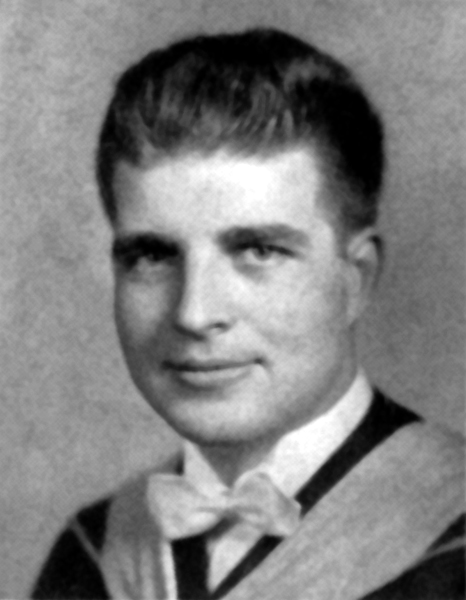 In 1937 Wheaton College founded the John Dickey Memorial Graduate School of Theology. To augment the faculty President J. Oliver Buswell remembered a retired Methodist minister with an earned doctorate. He asked Dr. Jacob Hoffmann to join the faculty to teach Hebrew and Old Testament. Hoffmann spoke with a heavy German accent and in his autobiography Carl F. H. Henry recalled a very funny situation where this accent lighted the mood. Henry was part of early classes of the graduate school and remembered Hoffmann exegeting a portion of Genesis. In his distinctive, and emphatic, German Hoffmann read Genesis 28:20 “Und Chakup wowed a wow” (more clearly, “and Jacob vowed a vow”). Henry and his classmates chuckled a bit. Hoffmann not sure if he misread the verse restated, with more emphasis, “Und Chakup wowed a wow!” Chuckles turned to unhindered laughter. Not used to the classroom, Hoffmann gathered his composure and, for a third time, recited the beginning of the verse, but more slowly: “Und… Chakup… wowed… a… wow….” The small class of five or six students exploded. Henry, the son of German immigrants, recounted Hoffmann’s response, “Ah, chentelmen, I know vy you are laffink; you know vat sort of scountrel diss man Chakup vass, don’t you?” As a former pastor, Hoffmann likely knew a scoundrel or two when he saw one.
In 1937 Wheaton College founded the John Dickey Memorial Graduate School of Theology. To augment the faculty President J. Oliver Buswell remembered a retired Methodist minister with an earned doctorate. He asked Dr. Jacob Hoffmann to join the faculty to teach Hebrew and Old Testament. Hoffmann spoke with a heavy German accent and in his autobiography Carl F. H. Henry recalled a very funny situation where this accent lighted the mood. Henry was part of early classes of the graduate school and remembered Hoffmann exegeting a portion of Genesis. In his distinctive, and emphatic, German Hoffmann read Genesis 28:20 “Und Chakup wowed a wow” (more clearly, “and Jacob vowed a vow”). Henry and his classmates chuckled a bit. Hoffmann not sure if he misread the verse restated, with more emphasis, “Und Chakup wowed a wow!” Chuckles turned to unhindered laughter. Not used to the classroom, Hoffmann gathered his composure and, for a third time, recited the beginning of the verse, but more slowly: “Und… Chakup… wowed… a… wow….” The small class of five or six students exploded. Henry, the son of German immigrants, recounted Hoffmann’s response, “Ah, chentelmen, I know vy you are laffink; you know vat sort of scountrel diss man Chakup vass, don’t you?” As a former pastor, Hoffmann likely knew a scoundrel or two when he saw one.
All posts by David Malone
Jerry’s Pub R.I.P.
On August 4, 2010 Gerald Hawthorne ’51, a beloved Greek professor and mentor to many, passed on to his reward. His influence was noted in a festschrift published in 2003.
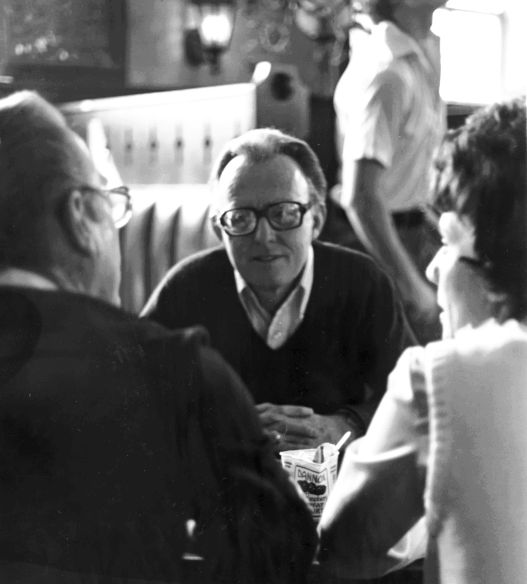 Beginning in the mid-1970s, Art Rupprecht and Jerry Hawthorne joined a group of their very interesting and interested Greek students late on Friday afternoons in the Stupe. The week’s classes were over and it was time to relax with a free cup of coffee — they arrived just at closing time when the staff were about to throw the remaining coffee down the drain. It was theirs for the taking. Faculty and students spent time thinking through some theological issues, talking about baseball or fishing, or discussing some difficult Greek passage, telling a few jokes, and generally enjoying each others company and insights. Soon others wanted to join. So it became a weekly feature, but it was too large and often too raucous to continue meeting in a corner booth of the Stupe.
Beginning in the mid-1970s, Art Rupprecht and Jerry Hawthorne joined a group of their very interesting and interested Greek students late on Friday afternoons in the Stupe. The week’s classes were over and it was time to relax with a free cup of coffee — they arrived just at closing time when the staff were about to throw the remaining coffee down the drain. It was theirs for the taking. Faculty and students spent time thinking through some theological issues, talking about baseball or fishing, or discussing some difficult Greek passage, telling a few jokes, and generally enjoying each others company and insights. Soon others wanted to join. So it became a weekly feature, but it was too large and often too raucous to continue meeting in a corner booth of the Stupe.
Just as concerns over a meeting place arose a new chapel schedule was implemented with chapel to be held weekly on Mondays, Tuesdays, Thursdays and Fridays — leaving Wednesday at 10:30 free when faculty and students had no officially scheduled meetings. So Wednesday became the new day. Now all that was needed was a place. John Ortberg, speaking for his housemates, offered Windsor House as the newly designated place of meeting. It was agreed that faculty would provide the donuts and the Windsor men would provide the coffee. Occasionally one of the faculty would fudge a little on the donut buying, for one of them was caught slipping across to Windsor house early, to heat up a day-old coffee cake for the coffee hour.
Eventually these Windsor men graduated, but the new men assigned to that house wanted us to continue, which the faculty were only too happy to do. Windsor House, which was adjacent to Buswell Library, continued to be a place of meeting for students from all parts of the world, faculty from all discipline a — great amalgam of students and faculty. Discussions were lively and sometimes even heated, but always argued with passion, if not always with reason. Everyone present could not help learning something he (all men in those days) had not known before-those were great times together.
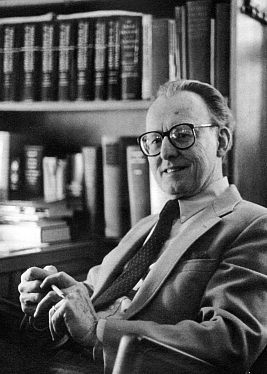 When Windsor House was torn down the group was invited to join the men in Kay House, so that this tradition could continue. By the time that particular Kay House group of men were ready to move on via graduation to their higher calling, the new “pharaoh knew not Joseph.” So no successive invitation was extended from that house. When that moment of desperation came, however, many of our student friends were awarded Hidden House as their next year’s domicile, and with one voice they beckoned us to come and join them at their home each Wednesday morning as usual. The tradition kept going and growing. This pleasurable and profitable welcome break from the routine bustle of academic life continued unabated for more than a decade.
When Windsor House was torn down the group was invited to join the men in Kay House, so that this tradition could continue. By the time that particular Kay House group of men were ready to move on via graduation to their higher calling, the new “pharaoh knew not Joseph.” So no successive invitation was extended from that house. When that moment of desperation came, however, many of our student friends were awarded Hidden House as their next year’s domicile, and with one voice they beckoned us to come and join them at their home each Wednesday morning as usual. The tradition kept going and growing. This pleasurable and profitable welcome break from the routine bustle of academic life continued unabated for more than a decade.
As change is always inevitable, the chapel schedule changed again. The new schedule had it fall on Monday, Wednesday and Friday. Not wishing to flaunt chapel, nor to encourage undesirable behavior on the students’ part, the majority of the faculty regulars decided that all who wished could come to Jerry Hawthorne’s office (on the second floor of Wyngarden Health Center) at the traditionally designated time. As many as 15-18 professors from the departments of literature, language, philosophy, psychology, sociology, history, communication and the sciences crammed into that small office for the weekly repast of coffee and donuts. Here the late and beloved Dr. Joe McClatchey delighted to come as long as he was alive; it was he who dubbed this place and this congregation, “Jerry’s Pub,” a name it still holds.
Workout
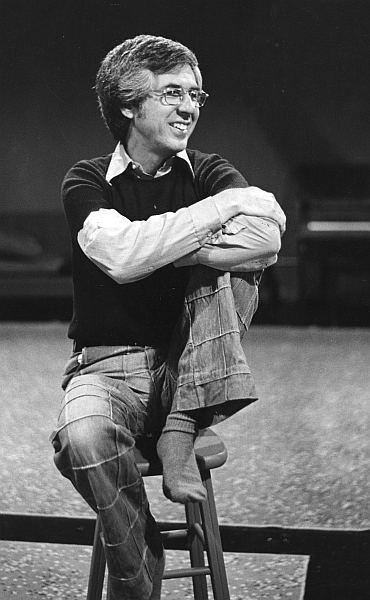 Wheaton’s drama program hold auditions each fall for Theater Workout Group. Commonly known as Workout, its roots began in the work of Professor M. James “Jim” Young and has been at the center of the Arena Theater experience at Wheaton since 1972. Former Workout participant, Mark Hallen, remembered that “the Workout model is a process of theater training, personal development, and spiritual formation that creates an intimate collaborative community that commits to grow, learn, and create together.” Meeting twice a week Workout strives to establish a sense of community and an environment where dramatic skills are developed. Exercises emphasize self-exploration and self-examination. Responding to complaints of the in-depth nature of Workout, Young responded that Workout is to theater what football practice is to the game. Players don’t just show up for the game — they need to work together, train together, and commit themselves to their teammates.
Wheaton’s drama program hold auditions each fall for Theater Workout Group. Commonly known as Workout, its roots began in the work of Professor M. James “Jim” Young and has been at the center of the Arena Theater experience at Wheaton since 1972. Former Workout participant, Mark Hallen, remembered that “the Workout model is a process of theater training, personal development, and spiritual formation that creates an intimate collaborative community that commits to grow, learn, and create together.” Meeting twice a week Workout strives to establish a sense of community and an environment where dramatic skills are developed. Exercises emphasize self-exploration and self-examination. Responding to complaints of the in-depth nature of Workout, Young responded that Workout is to theater what football practice is to the game. Players don’t just show up for the game — they need to work together, train together, and commit themselves to their teammates.
J. Randall Petersen, in his brief history of Workout, stated that “the discipline of the Workout session built strong actors. The intense interaction of the Workout group also built strong bonds. Breathing, speaking, moving, listening, responding, risk-taking — all these valuable stage skills matured in this incubator.” Its “graduates” have gone on to working in community theaters and church drama groups, directing school plays, academic careers in theater and professional acting careers.
Upon Jim Young’s retirement in 1994 Workout’s direction moved to Mark Lewis who placed an even greater emphasis upon community and spiritual development within Workout. The intensity of relationship creates a level of intimacy that Workout alums have found a bond even if they have not met before.
The Beagle
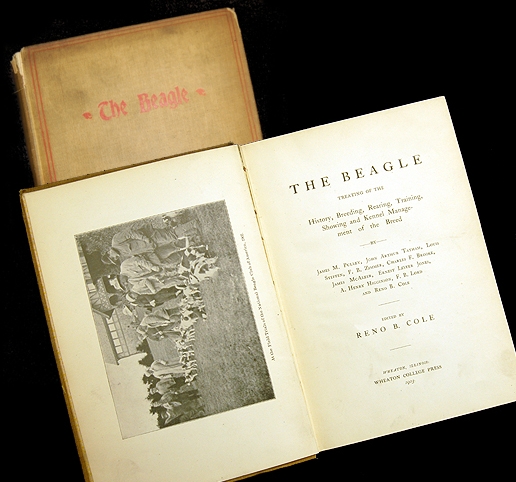 When some here the title The Beagle their minds may be drawn to Charles Darwin, but at Wheaton College this may not be the first thought to emerge. For “Wheaties” the thought should run to The Wheaton College Press, of course. Well, maybe not “of course.” The Beagle: treating of the history, breeding, rearing, training, showing and kennel management of the breed is quite a mouthful and was the result of the editing efforts by Reno B. Cole and was published by the Wheaton College Press in 1903. Cole was enrolled at Wheaton and studied art, science and literature over an eleven year period. After leaving Wheaton he made his way to DeKalb, Illinois. He became an authority on beagles.
When some here the title The Beagle their minds may be drawn to Charles Darwin, but at Wheaton College this may not be the first thought to emerge. For “Wheaties” the thought should run to The Wheaton College Press, of course. Well, maybe not “of course.” The Beagle: treating of the history, breeding, rearing, training, showing and kennel management of the breed is quite a mouthful and was the result of the editing efforts by Reno B. Cole and was published by the Wheaton College Press in 1903. Cole was enrolled at Wheaton and studied art, science and literature over an eleven year period. After leaving Wheaton he made his way to DeKalb, Illinois. He became an authority on beagles.
Few know the history of the Wheaton College Press. However, the staff of the Archives & Special Collections have gathered together a variety of sources to tell its story. 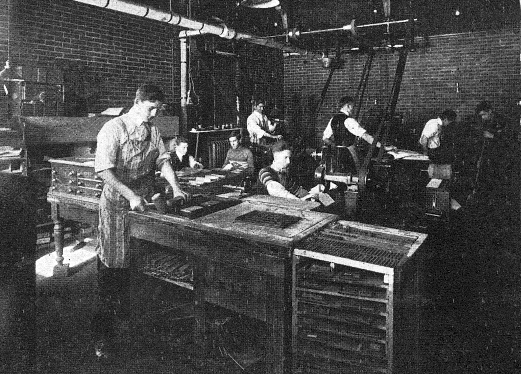 The press was begun when the college received a Marder and Luse press as a donation. Using the model of manual colleges like Knox and Berea colleges had been, Amos Dresser, Jr. and Charles Blanchard envisioned a press that could save the college money as well as employ students. Amos’ son, Ernest, was the first manager. As the press expanded another press and other equipment was added. The press employed nearly two dozen students at its peak. The college used the press to print and publish its own publications, such as the Record, Echo and Catalog.
The press was begun when the college received a Marder and Luse press as a donation. Using the model of manual colleges like Knox and Berea colleges had been, Amos Dresser, Jr. and Charles Blanchard envisioned a press that could save the college money as well as employ students. Amos’ son, Ernest, was the first manager. As the press expanded another press and other equipment was added. The press employed nearly two dozen students at its peak. The college used the press to print and publish its own publications, such as the Record, Echo and Catalog. 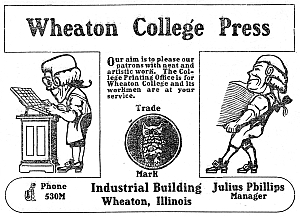 In its last years the expenses outpaced receipts and outside business accounted for less than two percent of revenue. The last known manager was Julius C. Phillips. When he finished college in 1920 and new technologies, such as four color printing and lithography, emerged the press lagged and then remained unused.
In its last years the expenses outpaced receipts and outside business accounted for less than two percent of revenue. The last known manager was Julius C. Phillips. When he finished college in 1920 and new technologies, such as four color printing and lithography, emerged the press lagged and then remained unused.
Below is a bibliography of known titles produced by the press. You will note the wide range of subjects covered.
Dresser, Amos. The Christian Flag. Wheaton: Wheaton College Press, 1894.
Hart, Walter Osgood. Bits of Exegesis. [n.p.]: Wheaton College Press, 1894.
[note: Hart was an alum and Civil War veteran]Monrad, John Henry. A. B. C. in Cheese-Making. A Short Manual for Farm Cheese-Makers. Wheaton, Ill: Wheaton College Press, 1894.
[note: Monrad was a dairy expert with the U.S. Dept. of Agriculture]Wheaton College (Ill.). Echoes. Wheaton, Ill: Wheaton College Press, 1895.
Monrad, J. H. Cheese Making in Switzerland …: Condensed Review of Swiss, German and French Literature, Combined With Observations in Wisconsin Factories. Wheaton, Ill: Wheaton College Press, 1896.
Daniel, Mooshie G. Modern Persia. Wheaton, Ill: Wheaton College Press, 1897.
Adams Memorial Library (Wheaton, Ill.). Catalog of the Adams Memorial Library. Wheaton, Ill: Wheaton College Press, 1901.
Pulley, James M., and Reno B. Cole. The Beagle: Treating of the History, Breeding, Rearing, Training, Showing and Kennel Management of the Breed. Wheaton IL: Wheaton College Press, 1903.
Wheaton College (Ill.). Wheaton College Bulletin. Wheaton, Ill: Wheaton College Press, 1910.
Straw, Darien Austin. Bible Sociology. Wheaton, Ill: Wheaton College Press, 1918.
America’s Town Meeting of the Air
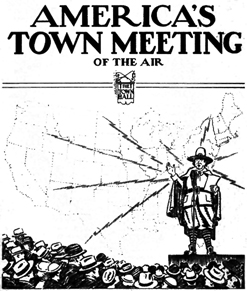 Attempting to hearken back to the town meetings of yore, America’s Town Meeting of the Air was a public affairs radio broadcast and one of radio’s first talk shows. Beginning as an experiment by the National Broadcasting Company, the program had a discussion format that tried to interest the public in current events and ran from 1935 to 1956. Providing a venue for opposing viewpoints, the program’s goal was to create a new kind of educational program that was entertaining and intellectually stimulating. It’s well-known guests were experts on the topic of the broadcast and the audience was encouraged to participate, especially to submit brief question without rudeness or insults, though sarcasm easily seeped in. The success of the program was the audience participation and their challenging questions, though some audience members became belligerent or expressed patently racist views. The program became so popular that a monthly column was written for Current History magazine and a synopsis of the weekly program’s content was disseminated to public school civics teachers. Among the topics of discussions were “Which way America: Fascism, Communism, Socialism or Democracy,” “Does America have freedom of the press,” “Is censorship sometimes necessary,” “Should The U.S. enter World War II?” Due to changes at NBC and the times the program was aired the show went through a long period of steady decline. The moderator, George V. Denny Jr., was replaced in 1952 and the show ended in mid-1956.
Attempting to hearken back to the town meetings of yore, America’s Town Meeting of the Air was a public affairs radio broadcast and one of radio’s first talk shows. Beginning as an experiment by the National Broadcasting Company, the program had a discussion format that tried to interest the public in current events and ran from 1935 to 1956. Providing a venue for opposing viewpoints, the program’s goal was to create a new kind of educational program that was entertaining and intellectually stimulating. It’s well-known guests were experts on the topic of the broadcast and the audience was encouraged to participate, especially to submit brief question without rudeness or insults, though sarcasm easily seeped in. The success of the program was the audience participation and their challenging questions, though some audience members became belligerent or expressed patently racist views. The program became so popular that a monthly column was written for Current History magazine and a synopsis of the weekly program’s content was disseminated to public school civics teachers. Among the topics of discussions were “Which way America: Fascism, Communism, Socialism or Democracy,” “Does America have freedom of the press,” “Is censorship sometimes necessary,” “Should The U.S. enter World War II?” Due to changes at NBC and the times the program was aired the show went through a long period of steady decline. The moderator, George V. Denny Jr., was replaced in 1952 and the show ended in mid-1956.
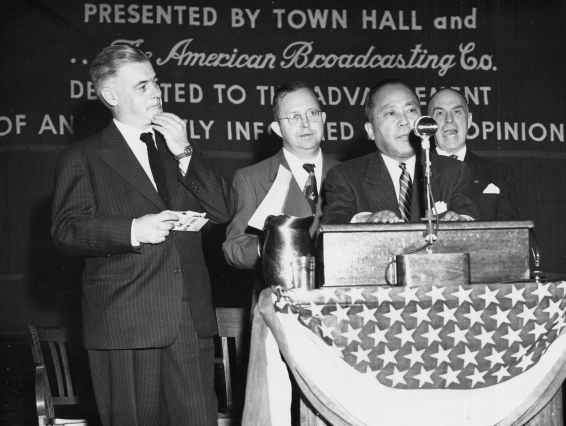 In 1952 America’s Town Meeting of the Air made its way to Wheaton College. The topic of the broadcast was “What is the answer for Korea” and Dr. Orville Hitchcock of the University of Iowa served as the moderator for the meeting. Dr. You Chan Yang, South Korean Ambassador to United States, Mr. Walter O’Hearn and Congressman Orland K. Armstrong of Missouri represented the various positions. Mr. O’Hearn was executive editor of the Montreal Star and represented the “left” position, while Armstrong, who also served on the editorial board of Reader’s Digest, represented the “right.”
In 1952 America’s Town Meeting of the Air made its way to Wheaton College. The topic of the broadcast was “What is the answer for Korea” and Dr. Orville Hitchcock of the University of Iowa served as the moderator for the meeting. Dr. You Chan Yang, South Korean Ambassador to United States, Mr. Walter O’Hearn and Congressman Orland K. Armstrong of Missouri represented the various positions. Mr. O’Hearn was executive editor of the Montreal Star and represented the “left” position, while Armstrong, who also served on the editorial board of Reader’s Digest, represented the “right.”
The National Archives houses dozens and dozens of recordings from the broadcast, including the Wheaton-hosted event in the New York University Collection, 1935 – 1954.
Jeremiah Wright’s “Invisible Giant”
Jeremiah Wright has become a volatile political figure in recent years. Though recently retired from pastoral ministry, Rev. Dr. Wright has described himself as “toxic” to the Obama administration after his comments about the history of race and race-relations in America from the pulpit of Trinity United Church of Christ in Chicago were scrutinized in the press. Obama had been a member of Wright’s South Side Trinity Church.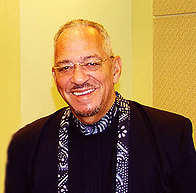
Despite his recent tangles, in 1996 Wright’s expertise on African-American church history was recognized and he was invited to give Wheaton’s African-American Church History Lecture. He followed the previous appearances of Dr. Larry Murphy (Professor of the History of Christianity, Garrett-Evangelical Theological Seminary) and Ms. Sherry Sherrod DuPree. The lecture series began in 1994 to introduce “interesting themes from a Black American religious experience and history to the Wheaton student body.”
Over 250 people gathered to hear Rev. Wright’s lecture “The Black Church Since World War II: The Invisible Giant.” He addressed the growth and development of the Black church and the impact on society in terms of facilitating the Black middle class, particularly highlighting the social transformation of the church and the way gospel music illustrates those changes, and the African heritage which continues to express itself in the church and community.
.
Elihu B. Washburne
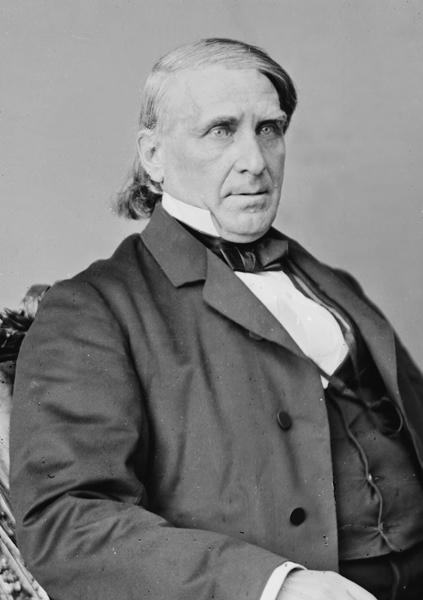 One of the earliest endowed scholarships was made in the name of Elihu B. Washburne by his wife. Washburne was born in Livermore, Maine on September 23, 1816. He had attended the local common school and later become a printer’s apprentice, eventually becoming assistant editor of the Kennebec Journal in Augusta, Maine. He also studied law at Kents’ Hill Seminary and Harvard Law School. He was admitted to the bar in 1840 and moved to Galena, Illinois to practice law. A member of the House of Representative from Illinois, Washburne was also a delegate to the Whig National Conventions in 1844 and 1852. He served in Congress from 1853 to 1869, where he had been chairman of Committee on Commerce. A strong opponent of slavery, Washburne became a leading figure in the group that became known as the Radical Republicans (1854-1877). He was appointed, quite briefly (less than two weeks), Secretary of State under President Ulysses S. Grant, resigning a few days afterward to accept a diplomatic mission to France. He was the only foreign minister who remained at his post during the days of the Paris Commune in 1871, protecting Germans and other foreigners left behind by their delegations. In 1877 he returned to Illinois, settling in Chicago where he served as president of the Chicago Historical Society from 1884 until his death on October 23, 1887. Three of Washburne’s brothers (Cadwallader C. Washburn, William D. Washburn, and Israel Washburn, Jr.) were politicians and Washburne’s son, Hempstead Washburne, was mayor of Chicago from 1891 to 1893.
One of the earliest endowed scholarships was made in the name of Elihu B. Washburne by his wife. Washburne was born in Livermore, Maine on September 23, 1816. He had attended the local common school and later become a printer’s apprentice, eventually becoming assistant editor of the Kennebec Journal in Augusta, Maine. He also studied law at Kents’ Hill Seminary and Harvard Law School. He was admitted to the bar in 1840 and moved to Galena, Illinois to practice law. A member of the House of Representative from Illinois, Washburne was also a delegate to the Whig National Conventions in 1844 and 1852. He served in Congress from 1853 to 1869, where he had been chairman of Committee on Commerce. A strong opponent of slavery, Washburne became a leading figure in the group that became known as the Radical Republicans (1854-1877). He was appointed, quite briefly (less than two weeks), Secretary of State under President Ulysses S. Grant, resigning a few days afterward to accept a diplomatic mission to France. He was the only foreign minister who remained at his post during the days of the Paris Commune in 1871, protecting Germans and other foreigners left behind by their delegations. In 1877 he returned to Illinois, settling in Chicago where he served as president of the Chicago Historical Society from 1884 until his death on October 23, 1887. Three of Washburne’s brothers (Cadwallader C. Washburn, William D. Washburn, and Israel Washburn, Jr.) were politicians and Washburne’s son, Hempstead Washburne, was mayor of Chicago from 1891 to 1893.
A Mammoth Undertaking
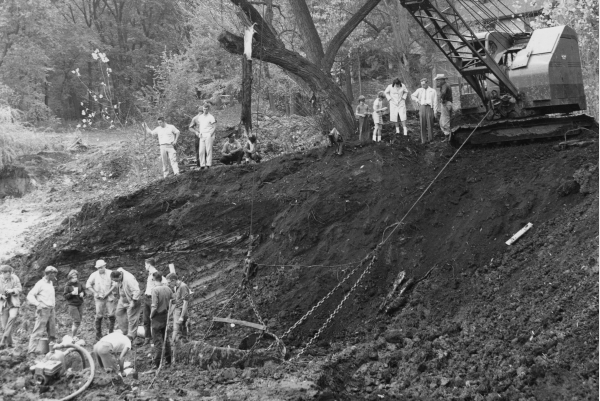 On October 16, 1963 on the property of Judge Joseph Sam Perry of Glen Ellyn, the remains of an over-11,000-year-old mastodon were found during digging for a man-made lake. Upon hearing this news Judge Perry called for help from Wheaton College, and Dr. Douglas Block of the geology department was soon put in charge of the excavation of the bones. More than 55% of the mastodon’s bones were found, and the basement of Breyer Building was used as temporary storage space for the skeleton for the restoration process. It was Dr. Donald C. Boardman, then chair of the geology department, who was placed in charge of the restoration, which eventually took over 11 years to complete. During this time Dr. Boardman visited every Mastodon exhibit in North America and Europe so as to see how best to display Wheaton’s skeleton. It was decided in the late 1960’s that the mastodon’s remains would be displayed in a special wing of the new science building that was being planned at that time; the wing was named the Edwin F. Deicke Exhibit Hall after one of the generous financial donors who made the Perry Mastodon project possible. Local Glen Ellyn artist, Richard Rush, designed the display that the skeleton now stands in. The Perry Mastodon Exhibit was officially dedicated on January 18, 1975. The Perry Mastodon is the second mastodon skeleton to be found in DuPage County, the first being found in 1869 by Ned Jayne.
On October 16, 1963 on the property of Judge Joseph Sam Perry of Glen Ellyn, the remains of an over-11,000-year-old mastodon were found during digging for a man-made lake. Upon hearing this news Judge Perry called for help from Wheaton College, and Dr. Douglas Block of the geology department was soon put in charge of the excavation of the bones. More than 55% of the mastodon’s bones were found, and the basement of Breyer Building was used as temporary storage space for the skeleton for the restoration process. It was Dr. Donald C. Boardman, then chair of the geology department, who was placed in charge of the restoration, which eventually took over 11 years to complete. During this time Dr. Boardman visited every Mastodon exhibit in North America and Europe so as to see how best to display Wheaton’s skeleton. It was decided in the late 1960’s that the mastodon’s remains would be displayed in a special wing of the new science building that was being planned at that time; the wing was named the Edwin F. Deicke Exhibit Hall after one of the generous financial donors who made the Perry Mastodon project possible. Local Glen Ellyn artist, Richard Rush, designed the display that the skeleton now stands in. The Perry Mastodon Exhibit was officially dedicated on January 18, 1975. The Perry Mastodon is the second mastodon skeleton to be found in DuPage County, the first being found in 1869 by Ned Jayne.
One of the better student pranks in Wheaton’s history involved the Perry Mastodon not long after its dedication on the 22nd of November 1975. A phony recording was found to have replaced the original exhibit narration. This prank, since called the Mastodon tape prank, was the work of Larry Shackley (’77) who recorded the fake tape in the WETN studios. The tape told a reworked and fanciful history of Perry Mastodon that included being frozen in a giant ice cube for thousands of years, being tranquilized by Judge Perry after reawakening, 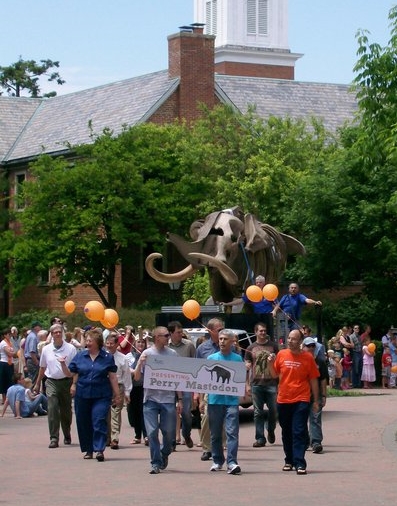 having half of its body removed for use in the cafeteria, and knowing how to talk and dance among other things.
having half of its body removed for use in the cafeteria, and knowing how to talk and dance among other things.
.
“Perry,” as the Mastodon is often affectionately called, was recently moved from is long-time home in the Deicke Exhibit Hall to a new home in the soon-to-be completed Science Center. Stealing their title for this blog, the Naperville Sun, along with many other news outlets, covered the event. With over a thousand people in attendance, “Perry” was carted by flat-bed truck to great fanfare and excitement. The fun can also be seen on Youtube. You can also view an online album of images from Perry’s discovery.
Bigs ideas from a little man
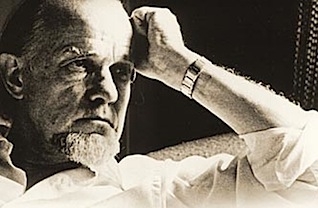 Though short in stature, Francis Schaeffer has been known worldwide for his big ideas and the L’Abri retreat center established along with his wife, Edith. Francis and Edith Schaeffer’s life and ministry were about communicating ideas, particularly ideas as they related to knowing God more fully and living in harmony with God. Hundreds of individuals passed through L’Abri in Switzerland and thousands have passed through other L’Abri locations around the globe.
Though short in stature, Francis Schaeffer has been known worldwide for his big ideas and the L’Abri retreat center established along with his wife, Edith. Francis and Edith Schaeffer’s life and ministry were about communicating ideas, particularly ideas as they related to knowing God more fully and living in harmony with God. Hundreds of individuals passed through L’Abri in Switzerland and thousands have passed through other L’Abri locations around the globe.
Hundreds of audio recordings were made of various talks and lectures conducted by the Schaeffers and others who were friends of L’Abri and regular guests, such as Hans Rookmaaker. These recordings were shared informally with those who desired to extend their knowledge and later they were distributed more formally by cassette. More recently L’Abri has gone through the process of digitizing the recordings and providing them free-of-charge on their website. And, with their permission we have been allowed to post those recordings that relate to several of the Special Collections at Wheaton College like the Schaeffer and Rookmaaker collections. These recordings may be browsed in the Archives & Special Collections archival database.
Onomasticon arthurianum
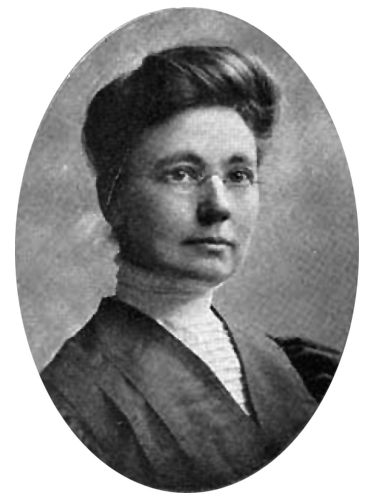 Alma Blount was born in Byron, Illinois on November 29, 1866. She attended local schools and graduated from Byron High School in 1882. Afterward she studied at Wheaton College where she stayed on as an instructor of English after her graduation in 1886. While teaching she continued to take classes and earned a second bachelors degree, the second being a bachelor of science, received in 1890. She left Wheaton in 1893 to pursue further studies at Cornell University where she received her Ph.D. in 1896. Her doctoral work was on “The Original Dialect of the Anglo-Saxon Poem Andreas.” As if this wasn’t enough she also studied at Radcliffe College earning nearly enough credits to receive a masters degree. She also traveled abroad studying at the British Museum, Bibliotheque Nationale and the Sorbonne. She was a member of Kappa Delta Pi, an international education honor society.
Alma Blount was born in Byron, Illinois on November 29, 1866. She attended local schools and graduated from Byron High School in 1882. Afterward she studied at Wheaton College where she stayed on as an instructor of English after her graduation in 1886. While teaching she continued to take classes and earned a second bachelors degree, the second being a bachelor of science, received in 1890. She left Wheaton in 1893 to pursue further studies at Cornell University where she received her Ph.D. in 1896. Her doctoral work was on “The Original Dialect of the Anglo-Saxon Poem Andreas.” As if this wasn’t enough she also studied at Radcliffe College earning nearly enough credits to receive a masters degree. She also traveled abroad studying at the British Museum, Bibliotheque Nationale and the Sorbonne. She was a member of Kappa Delta Pi, an international education honor society.
Blount taught at the Wheaton Academy, Lawrence University (1900-1901) and finished her teaching career at Michigan State Normal College, which became Eastern Michigan University. She contributed to several books in English and Literature, such as the four volume Progressive Studies in English and Intensive Studies in American Literature. She authored over a dozen articles in English and Education journals.
Being from small, parochial, Wheaton College did not cause Miss Blount to shrink from a significant scholarly task, one that some felt could not be undertaken at all by an individual. Her life work was “Onomasticon Arthurianum” that was never published. Housed at the Widener Library at Harvard, this massive work sought to be a comprehensive index of personal and place names in the medieval Arthurian romance lexicon. During her lifetime her work was considered the only guide to the sizable body of Arthurian literature In English and was regarded as one stage, the first, in an effort to compile a fuller Onomasticon Arthurianum. Blount’s index was focused upon more than two hundred Arthurian works in ten languages and she recorded her data on nearly twenty thousand slips. When she recognized that she would not be able to complete her work she deposited it at Harvard so that it would profit other scholars. There was professional disappointment at it not being completed, but also an understanding of the magnitude of the task, especially for one person. Despite the serious limitations of her index, Miss Blount deserves the gratitude of Arthurians, not only because she was a pioneer in a work of almost unexampled size and complexity but also because the concrete results of her labors afford a guide for developing a sounder plan of procedure. Her experience made it clear that any new attempt to achieve the Onomasticon must be carried out in several stages or units.
After reaching the rank of full professor Blount retired in 1935. After a lengthy, debilitating illness, she died in Tempe, Arizona on December 2, 1950.